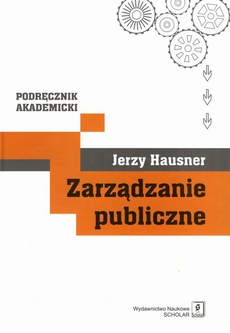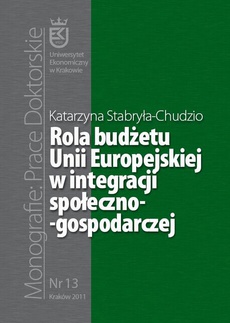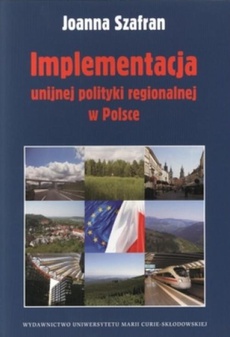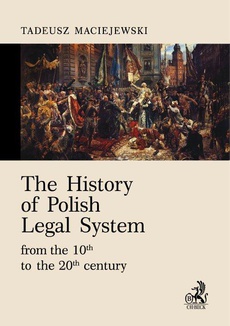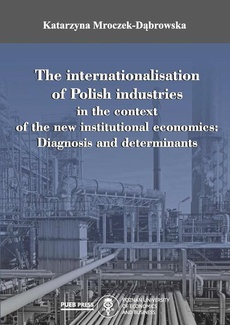POLECAMY
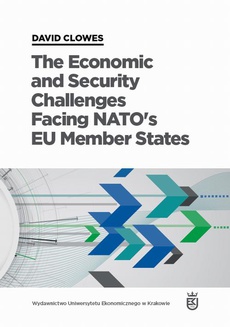
The Economic and Security Challenges Facing NATO’s EU Member States
Autor:
Format:
ibuk
W monografii wskazano główne regiony świata charakteryzujące się brakiem stabilności gospodarczej i politycznej oraz przeprowadzono klasyfikację państw członkowskich NATO ze względu na ponoszone wydatki na obronę. Omówione zostały metody pomiaru siły państw, opisano również ewolucję modeli siły od lat 50. ubiegłego wieku i ich znaczenie. Wybrane modele siły zastosowane zostały do analizy trendów w globalnym układzie sił. Celem badania był pomiar rozkładu i struktury sił NATO w Unii Europejskiej. Przedstawiono wyniki empiryczne analizy dla głównych graczy międzynarodowych oraz ich wkład w wydatki na obronność na wschodnich i zachodnich flankach NATO. Kwestie te omówione zostały w kontekście wyzwań dotyczących bezpieczeństwa, poziomu i jakości wyposażenia wojskowego w wybranych państwach, a także polityki rządu w zakresie wydatków na obronność. Podjęto problem przyszłości NATO oraz kwestę utworzenia Europejskich Sił Obronnych. Przedstawione zostały także zagrożenia, które według opinii publicznej uznawane są za istotne w całej Unii Europejskiej.
| Rok wydania | 2018 |
|---|---|
| Liczba stron | 152 |
| Kategoria | Unia Europejska |
| Wydawca | Wydawnictwo Uniwersytetu Ekonomicznego w Krakowie |
| ISBN-13 | 978-83-7252-768-4 |
| Numer wydania | 1 |
| Język publikacji | angielski |
| Informacja o sprzedawcy | ePWN sp. z o.o. |
Ciekawe propozycje
Spis treści
| Introduction | 7 |
| 1. SECURITY CHALLENGES AND THE POWER RELATIONSHIP 13 | |
| 1.1. The Need to Rethink Security Measures – Areas of Regional Instability | 13 |
| 1.2. Changes in World Military Spending – the Position of NATO | 18 |
| 1.3. NATO – Overview of the Alliance and Its Defence Spending | 21 |
| 1.4. Defence Spending and Its Importance – Choice and Impact | 26 |
| 2. THE CLINE FORMULA AND ITS APPLICABILITY 30 | |
| 2.1. The Measurement of State Power – Selected Applications since the 1950s | 30 |
| 2.2. The Cline Formula – the Approach and the Choice of Indicators | 33 |
| 2.3. Modifications to Cline’s Formula – the Removal of Soft Power Components | 36 |
| 3. APPLICATION OF THE ECONOMIC-MILITARY POWER MODEL AND ITS RESULTS 38 | |
| 3.1. The Structure of the Model – Components and Variables of a 3 × 2 System | 38 |
| 3.2. The Global Players – Total Power of the Grand Five | 43 |
| 3.3. Total Power Decomposed – Critical Mass, Economic Potential and Military Strength | 45 |
| 3.4. Total and European NATO Power – Contributions and Interpretations | 48 |
| 3.5. The Composition of European NATO Power – Contributions to European Security | 50 |
| 4. MEASURING NATO’S ECONOMIC-MILITARY POWER IN THE EUROPEAN UNION 56 | |
| 4.1. The 3 × 3 Power Model – Modifications and Initial Results | 56 |
| 4.2. Critical Mass – Population, Country Size and Energy Production | 63 |
| 4.3. Economic Potential – GDP, Investment and Exports | 64 |
| 4.4. Public Spending – Defence, Public Order and Public Services | 66 |
| 5. NATO’S EAST AND WEST FLANKS AND THE TYPES OF SECURITY CHALLENGES AHEAD | 69 |
| 5.1. The Position on NATO’s Western Flank – the Main Players and the Limitations | 69 |
| 5.2. The Share of Defence in GDP – Changes in the West between 2002 and 2013 | 71 |
| 5.3. Defence Spending on NATO’s Eastern Flank – Comparative Analysis and Implications | 75 |
| 5.4. The Share of Defence in GDP – Changes in the East between 2002 and 2013 | 80 |
| 5.5. Russian-Ukrainian Security Relations – the Game Changer | 82 |
| 5.6. NATO in the Years Ahead – the EU and an EU Defence Force? | 86 |
| 6. PUBLIC PERCEPTIONS OF SECURITY THREATS AND AN EVALUATION OF STATE RESPONSES 89 | |
| 6.1. Concepts of Threats – Geographical and Private | 89 |
| 6.2. The Main Threats to Security in Europe – Regional Comparisons | 92 |
| 6.3. Selected EU State Responses – Future Outlooks | 95 |
| Conclusion | 100 |
| Appendices | 104 |
| Bibliography | 125 |
| List of Tables | 136 |
| List of Figures | 138 |
| Abstract in Polish | 139 |
| List of Works Published by the Cracow University of Economics in a Special Series of Scientific Papers: Monographs | 142 |

